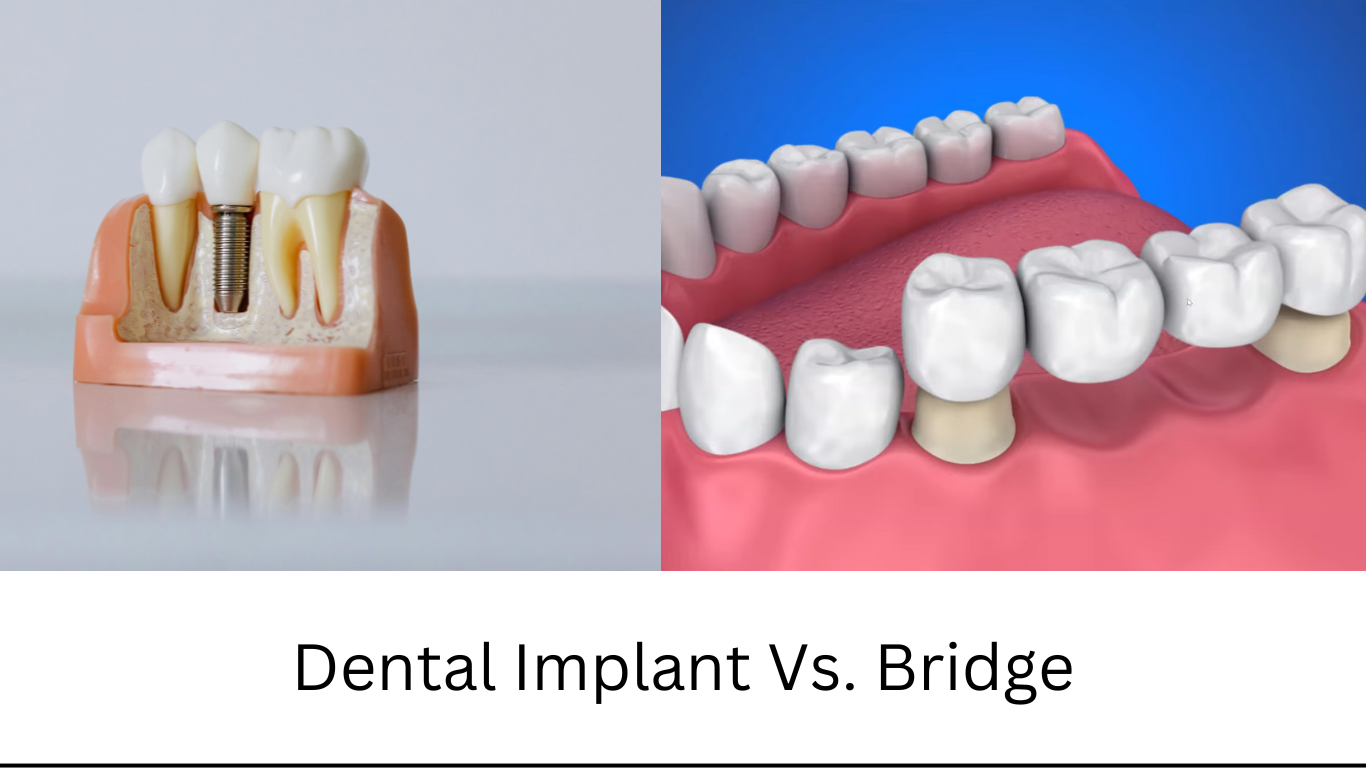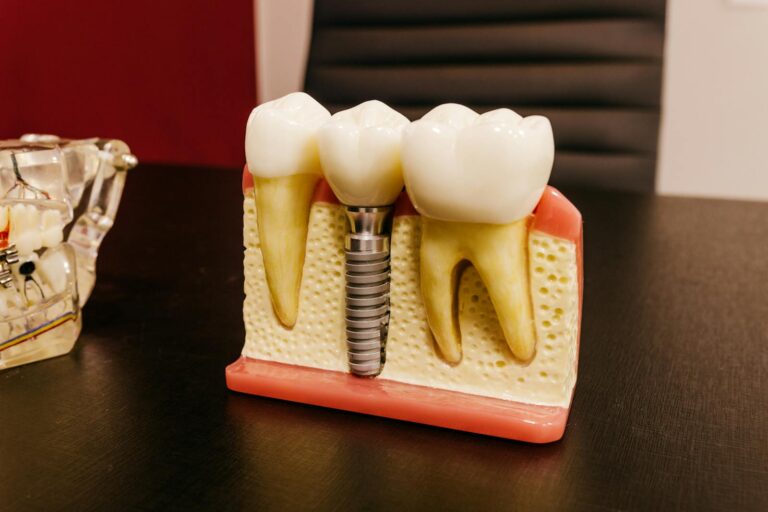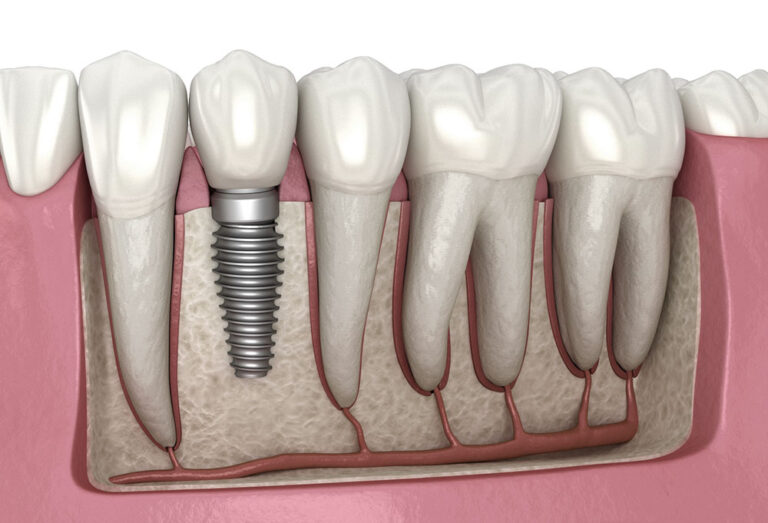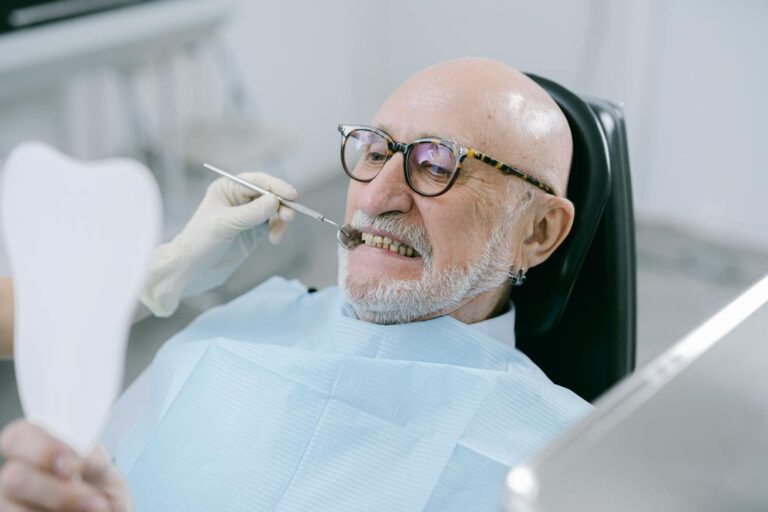Dental Implant vs. Bridge: Pros and Cons
When replacing a missing tooth, the two most common options are dental implants and dental bridges. Both solutions restore function and aesthetics, but they have key differences that can impact your decision. If you’re wondering which is the right choice for you, this guide will break down the pros and cons of each option.
What is a Dental Implant?
A dental implant is a permanent tooth replacement option that consists of three main components:
- A titanium or zirconia post that acts as an artificial root, surgically placed into the jawbone.
- An abutment that connects the implant post to the crown.
- A custom-made dental crown that replicates the appearance and function of a natural tooth.
Implants rely on osseointegration, where the bone fuses with the implant, creating a strong and stable foundation.
Pros of Dental Implants
Long-Lasting – Dental implants are known for their exceptional durability. With consistent oral hygiene and routine dental check-ups, they can last for decades or even a lifetime, making them one of the most reliable tooth replacement options available.
Prevents Bone Loss – One of the most significant benefits of implants is their ability to preserve bone. By mimicking the root of a natural tooth, the implant post stimulates the jawbone and helps prevent bone resorption, which can otherwise lead to a sunken facial appearance over time.
Natural Appearance & Function – Dental implants are custom-designed to match the color, shape, and size of your natural teeth. They also restore full chewing power and feel incredibly stable, allowing you to speak, eat, and smile with confidence.
No Impact on Adjacent Teeth – Unlike dental bridges, which require grinding down the neighboring teeth for support, implants stand independently. This means your healthy adjacent teeth remain untouched and intact, preserving their strength and structure.
Improved Oral Health – Since implants do not trap food or plaque as easily as bridges, and because they do not rely on neighboring teeth, they promote better overall oral hygiene. Cleaning around an implant is just like caring for a natural tooth, reducing the risk of decay and gum disease.
Cons of Dental Implants
Higher Initial Cost – Dental implants typically involve a higher upfront investment compared to dental bridges. The cost includes the surgical procedure, implant components, and multiple dental visits, which can make them less accessible for patients on a limited budget. However, many patients find the long-term durability and functionality worth the initial expense.
Surgical Procedure Required – Getting a dental implant involves a minor oral surgery, which includes placing the implant post into the jawbone. This surgical step carries some inherent risks such as infection, bleeding, or nerve damage, and also requires healing time. For individuals with certain medical conditions, surgery might not be advisable.
Longer Treatment Time – Unlike bridges that can be completed in a few weeks, dental implants often take several months to complete. This extended timeline includes the healing period required for osseointegration, during which the implant fuses with the jawbone before the final crown is placed. The overall process may range from three to six months or longer, depending on individual healing and whether bone grafting is needed.
Not Suitable for Everyone – Dental implants require sufficient bone density and healthy gums for successful placement. Individuals with advanced bone loss, uncontrolled diabetes, or chronic medical conditions may not be ideal candidates without additional procedures such as bone grafts or periodontal treatment. A thorough evaluation by a dental professional is essential to determine eligibility.
What is a Dental Bridge?
A dental bridge is a prosthetic device that consists of one or more artificial teeth (pontics) anchored by adjacent natural teeth or dental implants. Bridges are ideal when missing one or more teeth in a row.
There are different types of bridges, but the most common is a traditional bridge, which involves placing crowns on the two natural teeth next to the missing tooth.
Pros of Dental Bridges
Faster Treatment Process – A dental bridge can be completed in as little as two to three weeks, making it a more convenient solution for those who need a quick tooth replacement. Unlike implants, which require multiple stages and months of healing, a bridge only requires a few dental visits for preparation, impressions, and placement.
More Affordable – Compared to dental implants, bridges generally have a lower upfront cost. They are a more budget-friendly option for individuals who need to replace missing teeth without a significant financial investment.
No Surgery Required – Dental bridges do not require surgical placement. This makes them a less invasive option, reducing the risks associated with surgical procedures, such as infection or extended healing times.
Suitable for Patients with Bone Loss – Since bridges rely on adjacent natural teeth for support, they are an ideal option for patients who have experienced jawbone deterioration. Unlike implants, which require sufficient bone density for successful placement, bridges do not need bone grafting or additional procedures to compensate for bone loss.
Cons of Dental Bridges
Requires Modification of Healthy Teeth – One of the biggest drawbacks of a dental bridge is that it requires the reshaping of adjacent healthy teeth. To place the crowns that support the bridge, the dentist must remove a significant portion of the enamel from neighboring teeth, which can weaken them and increase the risk of damage or decay in the future.
Shorter Lifespan – While bridges provide a reliable solution for tooth replacement, they generally have a shorter lifespan compared to dental implants. Most bridges last between 10 to 15 years, whereas a well-maintained implant can last a lifetime. Over time, bridges may wear down or become loose, requiring replacement or additional dental work.
Increased Risk of Decay and Gum Disease – Because bridges sit above the gumline and are connected to adjacent teeth, cleaning around them can be challenging. Food particles and plaque can accumulate in hard-to-reach areas, increasing the risk of cavities in the supporting teeth and gum disease. Proper oral hygiene and regular dental check-ups are essential to maintaining the health of a dental bridge.
Does Not Prevent Bone Loss – Unlike dental implants, which integrate with the jawbone and stimulate bone growth, bridges do not replace the missing tooth root. This means that the jawbone in the area where the tooth is missing may gradually deteriorate over time, potentially leading to changes in facial structure and the need for additional dental treatments in the future.
Which Option is Best for You?
Both dental implants and bridges have their advantages and disadvantages. Choosing the best option depends on several factors, including:
- Longevity – If you want a long-term solution, implants are the better investment.
- Budget – If cost is a primary concern, a bridge may be a more affordable option.
- Oral Health – If you have strong adjacent teeth, a bridge might work well, but if you want to preserve surrounding teeth, an implant is better.
- Bone Health – If you have sufficient bone density, an implant is the superior option. If not, a bridge may be more practical.
- Treatment Timeline – If you need a faster solution, a bridge can be completed quicker than an implant.
Final Thoughts
Dental implants and bridges are both excellent options for tooth replacement, each with its own set of benefits and drawbacks. If you are looking for a durable, natural-looking, and long-term solution, an implant is the better choice. However, if you prefer a quicker and more cost-effective option, a bridge may suit your needs.
Consult with your dentist to determine the best option based on your oral health, lifestyle, and budget. A professional evaluation will ensure you choose the most suitable and effective solution for restoring your smile.





